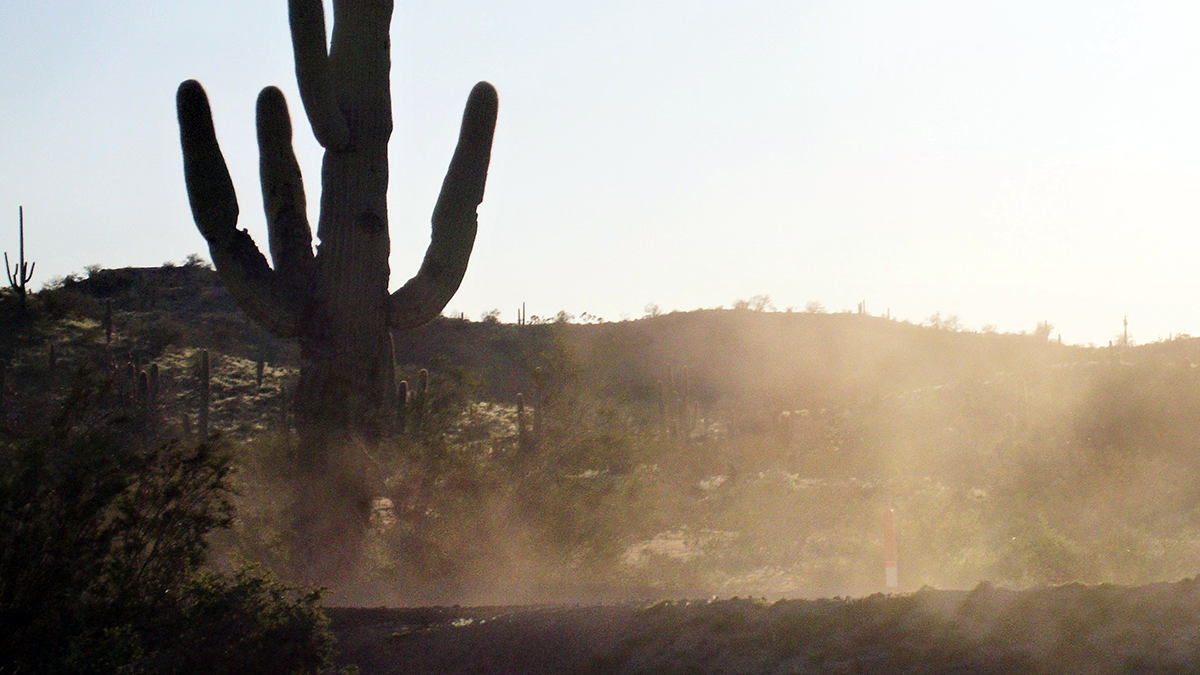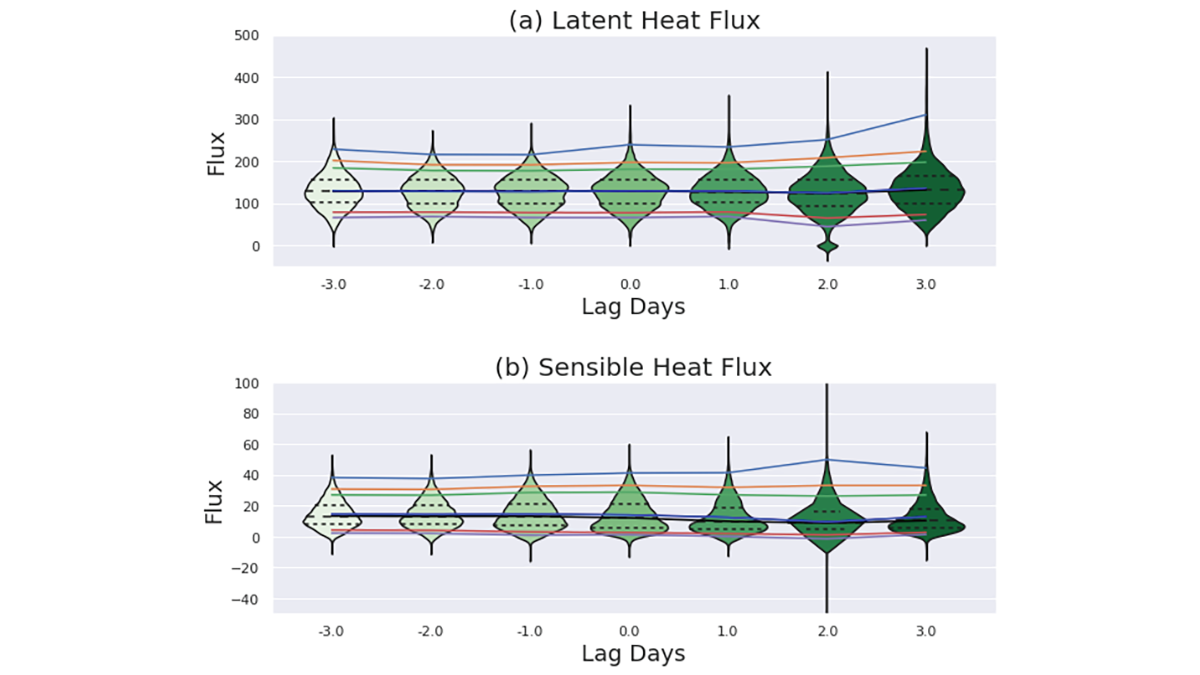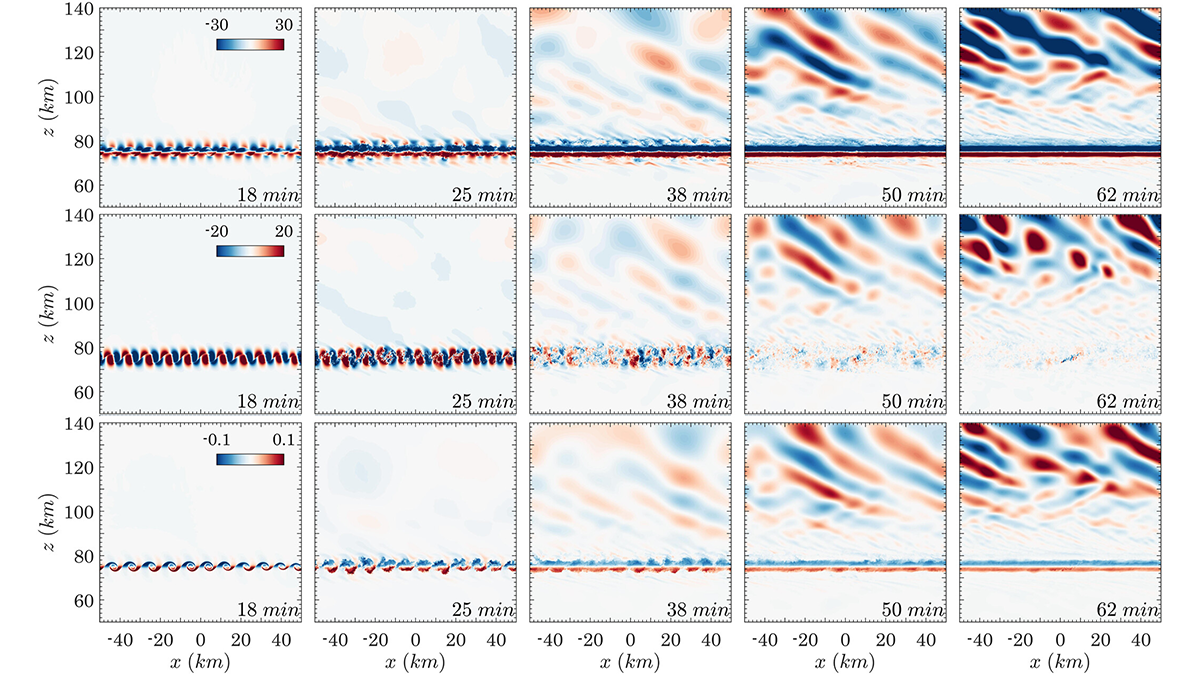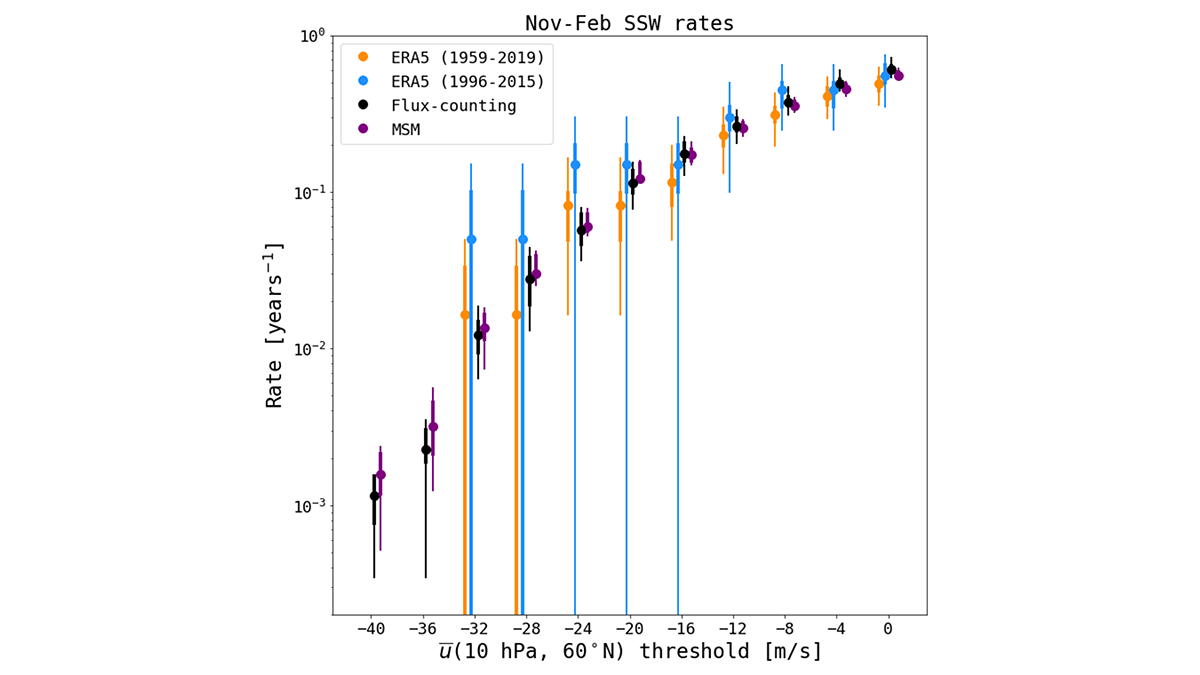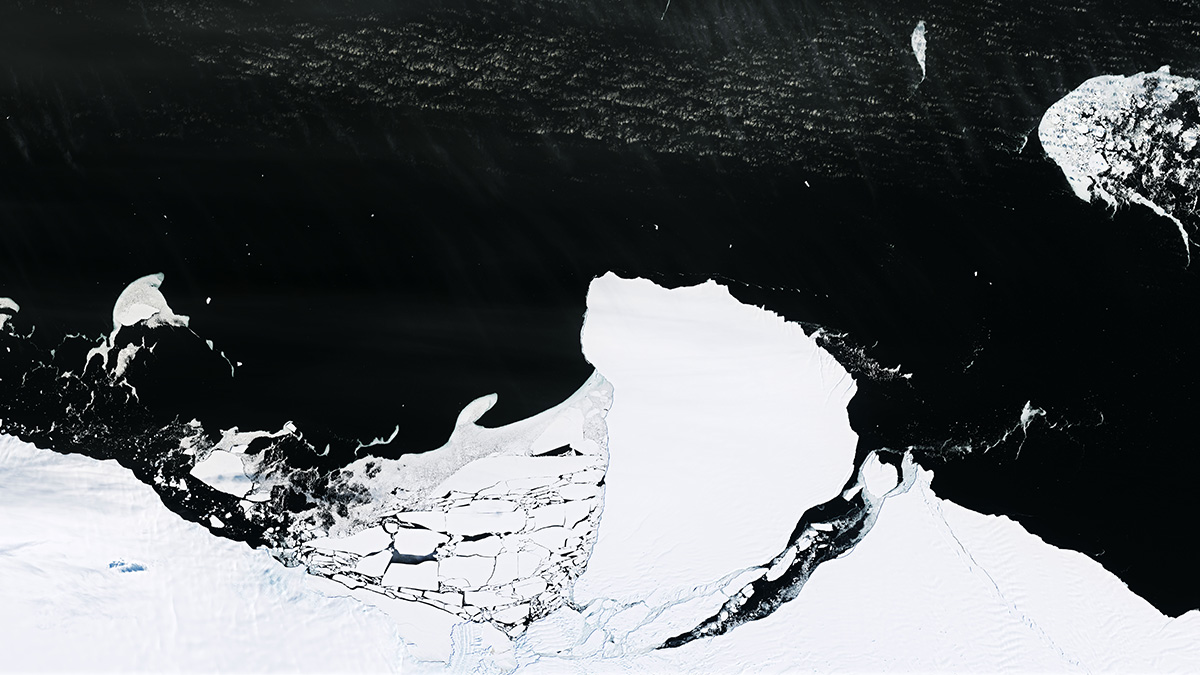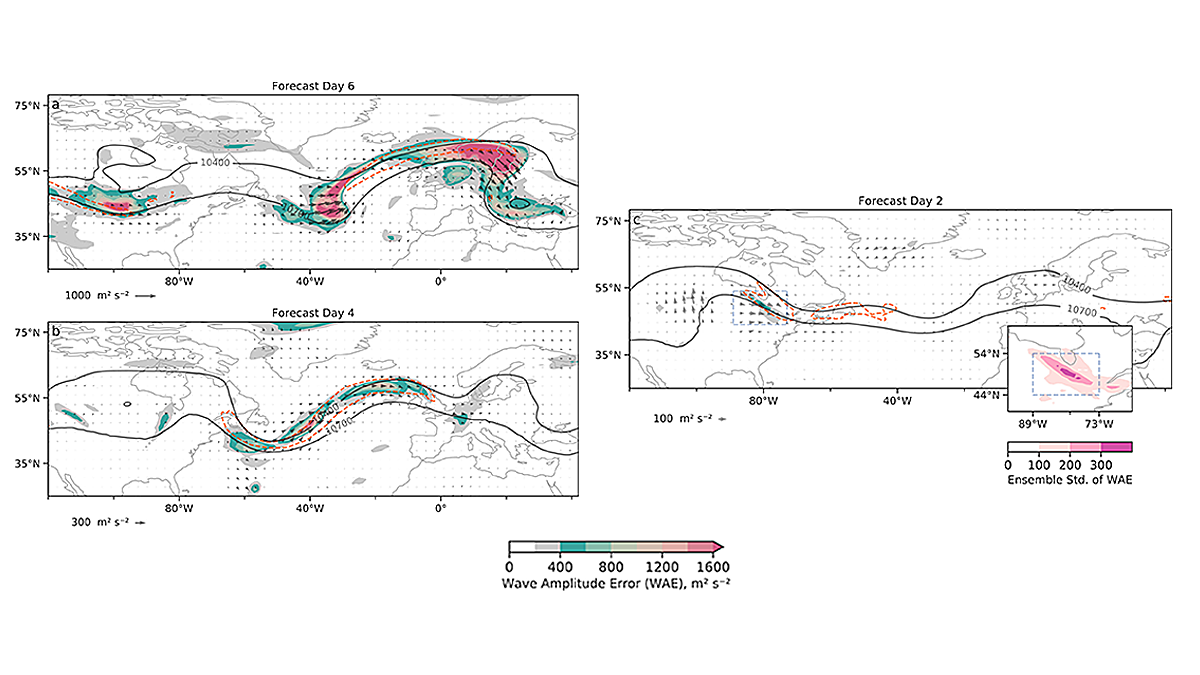Airborne dust not only causes disease, it also menaces transportation on land, sea, and air; disrupts renewable energy systems; transports pathogens and toxic substances; and poses many other hazards.
wind
Dust in the (Martian) Wind
The InSight Lander, on Mars, intentionally dumped sand over its seismic instrument’s tether and the wind sorted the particles by size as it blew them away.
Satellite View of African Easterly Waves and Hurricane Formation
Researchers present a new analysis of surface winds and enthalpy fluxes from satellite retrievals for African easterly waves that intensify into Atlantic hurricanes.
Wind Shear Instabilities Emit Gravity Waves
A new study shows that atmospheric gravity waves can be generated by the Kelvin-Helmholtz instabilities in the wind shear layer.
Quantifying Extreme Events from Short Weather Forecast Data
Subseasonal weather forecast ensembles are a useful tool for overcoming the inherent difficulty of quantifying extreme weather risk caused by data scarcity.
Tornadoes’ Fastest Winds Howl Close to the Ground
Radar data from storm-tracking scientists reveal that twisters’ winds churn 30% faster near Earth’s surface than above 100 meters, where measurements usually are taken.
Supercharged El Niño Could Speed Up Southern Ocean Warming
Projected changes to El Niño will likely accelerate warming of the deep oceans around the Antarctic, supplying heat that could drive ice loss and sea level rise.
Martian Rocks May Record Ancient Wind Directions
Mars 2020 Perseverance Rover images of abraded surface rocks may retain records of ancient wind directions, providing important ground-truth to our understanding of Mars’ recent climate history.
Mesoscale Convective Systems Impact Synoptic Wave Forecast
Scientists provide a process-level understanding of how mesoscale convective systems modify the evolution of the large-scale Rossby wave packet downstream and the jet stream.
Dust on Mars? The Answer, My Friend, is Blowin’ in the Wind
The first flights of a helicopter on another planet are used to study dust lifting and mobilization in Jezero Crater, Mars.

